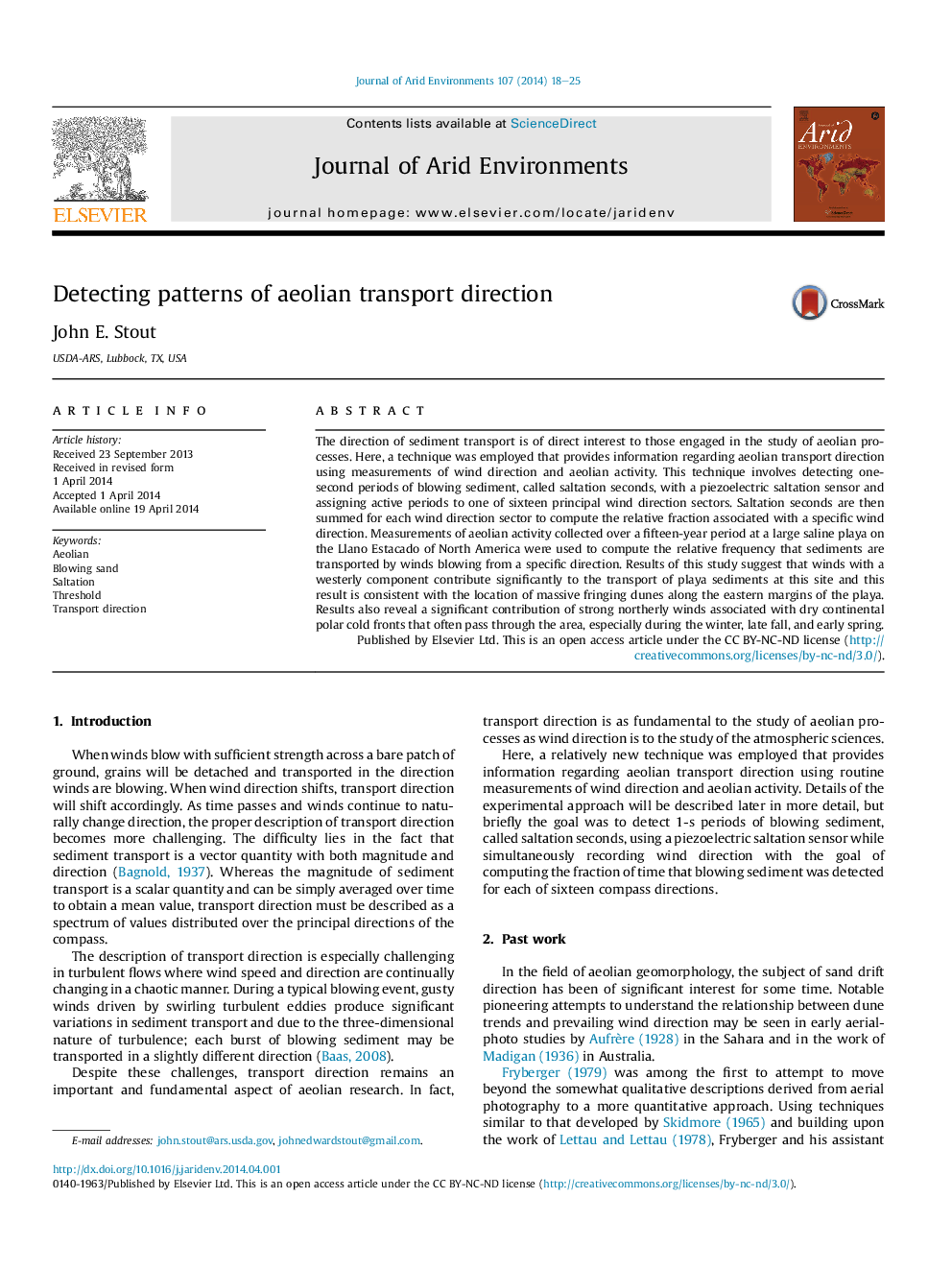| Article ID | Journal | Published Year | Pages | File Type |
|---|---|---|---|---|
| 6303474 | Journal of Arid Environments | 2014 | 8 Pages |
Abstract
The direction of sediment transport is of direct interest to those engaged in the study of aeolian processes. Here, a technique was employed that provides information regarding aeolian transport direction using measurements of wind direction and aeolian activity. This technique involves detecting one-second periods of blowing sediment, called saltation seconds, with a piezoelectric saltation sensor and assigning active periods to one of sixteen principal wind direction sectors. Saltation seconds are then summed for each wind direction sector to compute the relative fraction associated with a specific wind direction. Measurements of aeolian activity collected over a fifteen-year period at a large saline playa on the Llano Estacado of North America were used to compute the relative frequency that sediments are transported by winds blowing from a specific direction. Results of this study suggest that winds with a westerly component contribute significantly to the transport of playa sediments at this site and this result is consistent with the location of massive fringing dunes along the eastern margins of the playa. Results also reveal a significant contribution of strong northerly winds associated with dry continental polar cold fronts that often pass through the area, especially during the winter, late fall, and early spring.
Related Topics
Physical Sciences and Engineering
Earth and Planetary Sciences
Earth-Surface Processes
Authors
John E. Stout,
